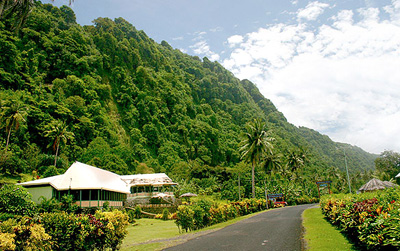
The tiny South Pacific country of Samoa plans to change to right-hand drive in a move that is causing controversy among its 214,265 inhabitants.
Samoa shares the Samoan Islands archipelago – located halfway between Hawaii and New Zealand – with left-hand-drive American Samoa, a U.S. territory.
Estimated to cost $2.5 million, the change will take effect “in the latter half of 2009 or some other later date,” the government says.
Prime Minister Tuila’epa Sa’ilele Malielegaoi says the switch will benefit Samoa’s underprivileged, “overwhelming majority,” as they will be sent cheap vehicles from relatives in New Zealand and Australia. Migrating Samoans also will benefit because they more easily will acquire driving jobs in New Zealand, he says.
But an organization named People Against Switching Sides (PASS) has filed suit to stop the change, claiming it breaches the constitution and will cause loss of life. It also asserts the change will harm the fragile local economy.
PASS Chairman Tole’afoa Solomona To’ailoa says the legislation has a provision that protects the government from responsibility for any loss of life or damage caused by the switch.

PASS recently organized a protest march on parliament that attracted more than 10,000 people, and two parliament members quit in disapproval over the plan.
Meanwhile, Hyundai Motor Co. Ltd. distributor CCK Trading Ltd. says it won’t be ordering RHD vehicles until the switch actually occurs.
“We have to pre-order three months beforehand,” Radio New Zealand quotes Manager Georgina Newton as saying.
Newton says she was surprised to hear Tuila’epa tell parliament the new legislation will allow Ascot Motors, which is owned by Toyota Motor Corp., to get vehicles directly from Japan.
“That’s when I realized he didn’t know what he was talking about,” she says. “Ascot already orders vehicles direct from Japan.”
Ascot Managing Director Ken Kingedin says the company is not importing new cars at the moment.
“We’re waiting for the bill to become law before we order anything, right-hand or left-hand drive,” he is quoted as saying.
Newton says her business is losing money due to the announcement and that rental car companies will have to change their entire fleets. “That’s a huge financial expenditure.”
The Samoan Car Rental Assn. says its members are trying to figure out what to do with hundreds of unwanted LHD cars once they become obsolete.
“We can’t afford to rent these cars to our overseas clients when we know very well it’s a big risk,” SCRA President Roy Lee says. “We can’t send them away to American Samoa because they don’t comply with U.S. safety standards.”
The Samoa Commercial Bank says it is raising the loan deposit required on a vehicle from 30% to 60% of a car’s cost due to the switch.
And Central Bank Governor Leasi Papali’i T. Scanlan says there will be other economic consequences.
“The ability of many customers to borrow for small amounts will be decreased as their main asset – their vehicle – has lost a great deal of its loanable value,” he says.
The Central Intelligence Agency World Factbook says there are 1,460 miles (2,337 km) of roads in Samoa, of which just 207 miles (332 km) are paved in a country slightly smaller than Rhode Island.
LHD vehicles were first introduced when Samoa was under German rule nearly a century ago, and while Samoa’s maximum speed limit is just 35 mph (56 km/h), driving is still an adventure.
“Travelers should be aware that vehicle safety regulations are rarely enforced, and traffic violations occur routinely,” a U.S. State Department advisory cautions. “Due to poor and deteriorating road conditions, night driving on unlit rural roads can be dangerous and should be avoided if possible.”




